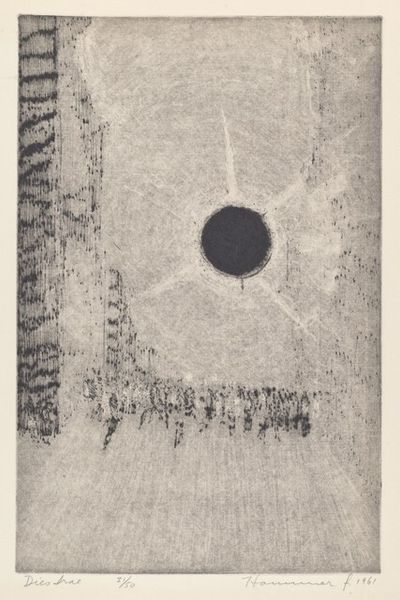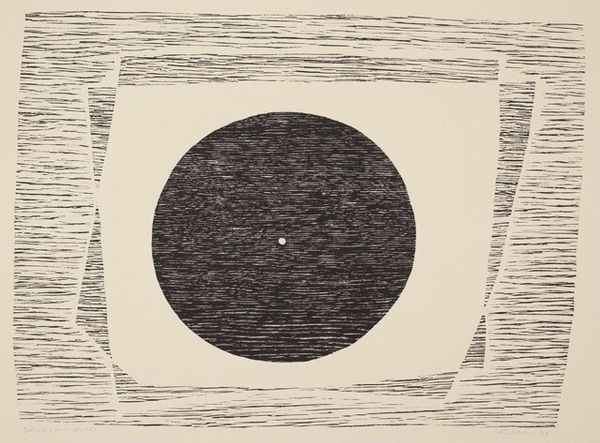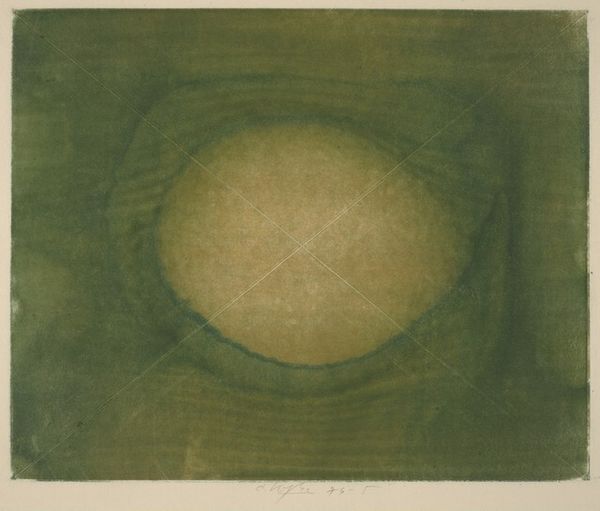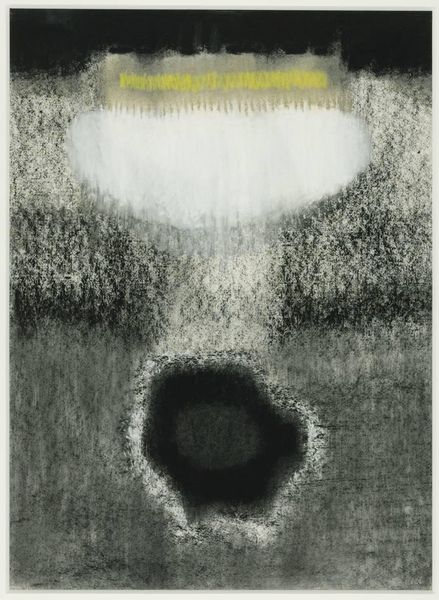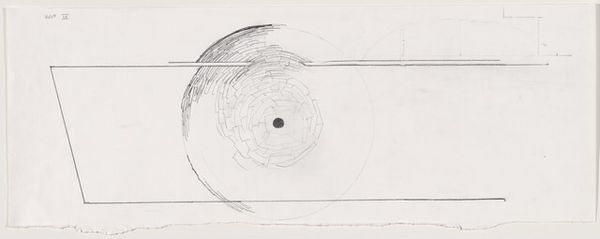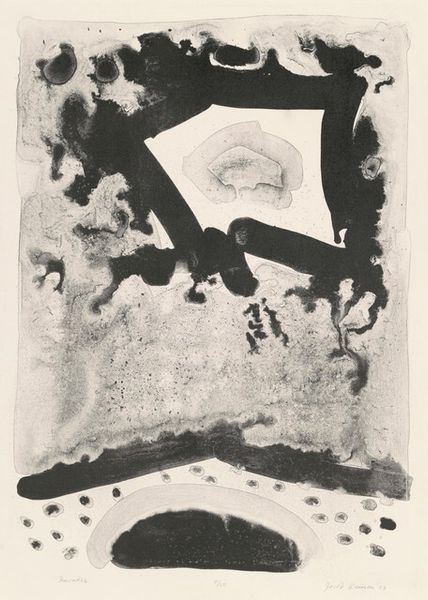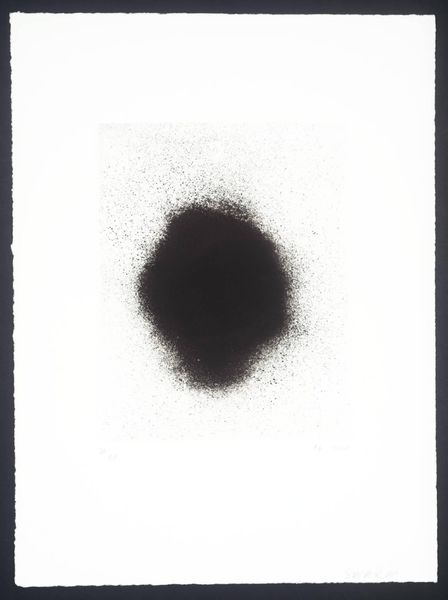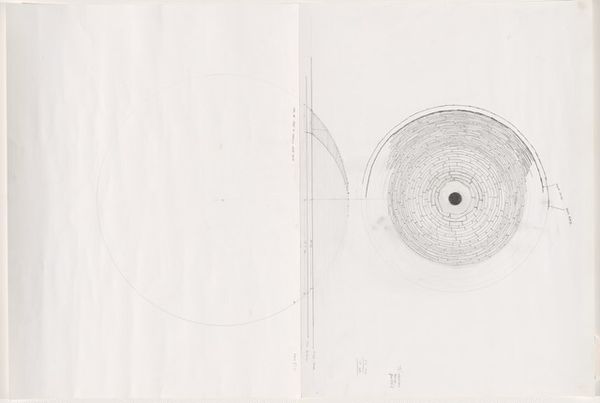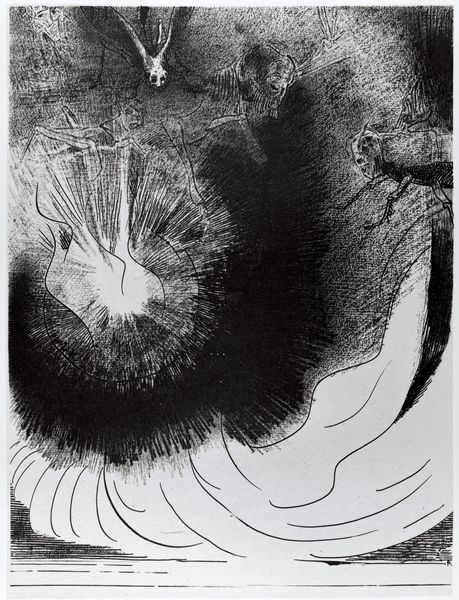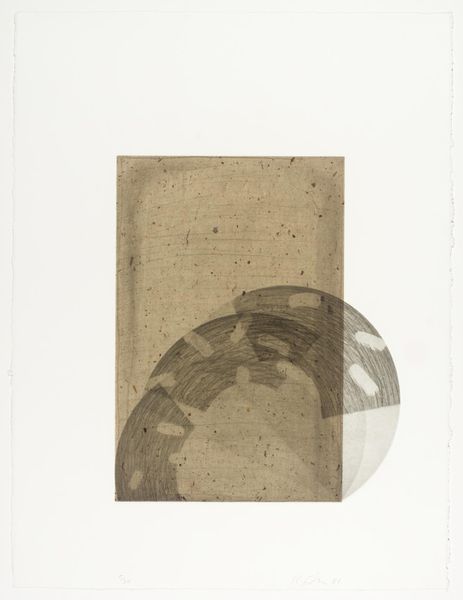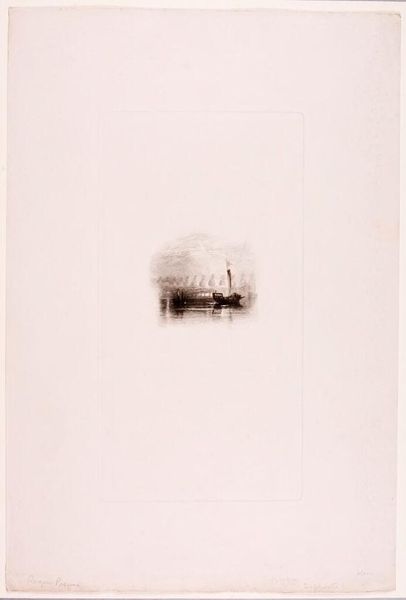
drawing
#
abstract-expressionism
#
drawing
#
organic
#
organic shape
#
geometric
#
abstraction
#
monochrome
Dimensions: overall: 45.7 x 61 cm (18 x 24 in.)
Copyright: National Gallery of Art: CC0 1.0
Curator: Right, let's talk about this striking piece. It’s an Untitled drawing by Barnett Newman, created in 1946. What leaps out at you? Editor: Well, I see a monochrome void. Like peering into some sort of primitive cosmos, everything whirling around a central emptiness. It's incredibly unsettling and rather primal. Curator: Primal, yes, that captures it well. Newman was deeply concerned with origins, beginnings. Look at how he builds this up, this inky vortex. The visible strokes feel almost…violent, like a rupture. This reminds us, in some ways, of the period immediately after the Second World War, in which Newman sought a new sublime. Editor: A rupture of old narratives perhaps? What’s being annihilated here? I'm thinking about the context, post-war, the dawning awareness of unimaginable horrors. The perfect geometry fighting with those very tactile marks speaks of an impossible harmony, or perhaps a necessary struggle towards one. Is Newman exploring trauma itself, rendered as negative space? Curator: Perhaps he is holding space for it. He used to say he wasn't interested in illustrating but in revealing. He thought that abstract form, not figuration, held the key to unlocking primal emotion. So in many ways, what he has created here, is just that-- a reveal. There is something meditative about it too, though. Despite the violent execution, there is this circle that begs to be filled in with something. Editor: A form that begs to be filled or questions we dare not attempt to answer? It is easy to read this artwork as a question and to see this dark whirlpool as the inky history from which a difficult truth must arise. What’s so fascinating, though, is how this void is so materially present. This abstraction somehow renders absence as a solid mass of concern. Curator: Mass is right. So, it begs the question for me, can something simple-- line, shape, or lack thereof, convey complexity? It certainly has the strength and the size in that simple notion to do so. It does not need complexity because life provides it on its own. So it does something primal but yet…still minimal? Editor: It reminds me of some of Foucault’s ideas on discourse. How some gaps, silences, are themselves incredibly loud acts of resistance or expressions of power. Newman’s drawing echoes that. The nothingness is almost deafening. A great piece. Curator: I find it so freeing when a work challenges me to not have one set answer, such as this drawing, which may have made its mark.
Comments
No comments
Be the first to comment and join the conversation on the ultimate creative platform.
